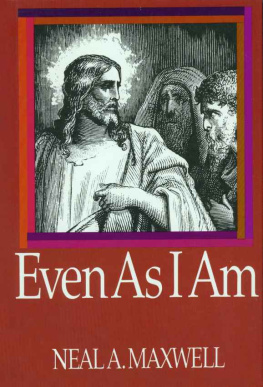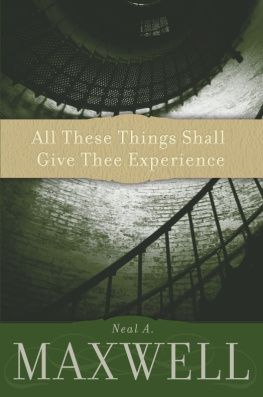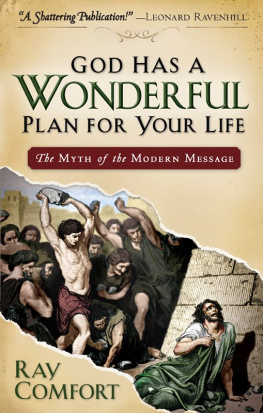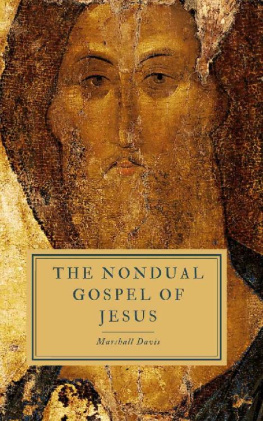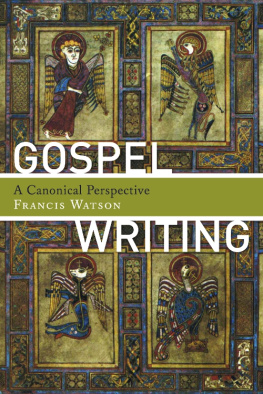Things As They Really Are
Neal A. Maxwell
1978 Deseret Book Company. All rights reserved. No part of this book may be reproduced in any form or by any means without permission in writing from the publisher, Deseret Book Company, P.O. Box 30178, Salt Lake City, Utah 84130. This work is not an official publication of The Church of Jesus Christ of Latter-day Saints. The views expressed herein are the responsibility of the author and do not necessarily represent the position of the Church or of Deseret Book Company. Deseret Book is a registered trademark of Deseret Book Company.
Acknowledgments
Special gratitude is expressed to Commissioner Jeffrey Holland, Elizabeth Haglund, Lowell Durham, Jr., and Roy Doxey for reviewing the manuscript and making important suggestions for its improvement. I am grateful also to Jeananne Gruwell for coping with my barely legible handwriting, which President Harold B. Lee once described as "unreformed Egyptian."
Appreciation is expressed to William James Mortimer and again, Brother Durham, of Deseret Book for inviting this effort, if not the results. Eleanor Knowles performed her usual but uncommon editing. Professor Robert Matthews' work in his commentary of the Joseph Smith Translation has been a genuine help.
As always, my family is due thanks, too, for some July afternoons and evenings, more of which could have been theirs. Happily, there were July tennis partners who let me do some needed unwinding.
Gratitude is also expressed to those Church members who, from time to time, have encouraged me with specific comments of appreciation for past efforts, reminding me that relatives are not my only readers.
I genuinely appreciate also rare writers like George MacDonald and C. S. Lewis for maximizing the light they received as they used their talent and courage to write so effectively of the stark beauty of the truths they too found. While I do not get my theology from such men, I openly acknowledge the catalytic impact of their writings.
Introduction
This book is an intense treatment of a vital subject. Unlike portions of the author's previous books that focused on various dimensions of the gospel with discussions of the many insights it provides to us that are essential for coping with reality, this book attempts to probe reality itselfthe very center of the gospel planthe things that matter most, on which everything else hangs, and around which everything else must assemble.
The gospel of the Lord Jesus Christ gives us many truths, exceptional beauties, and innumerable blessings, but at its center are certain truths that reflect a stunning simplicity. There is, to be sure, a certain stark beauty about these reassurances, but one must not make the mistake of believing in them just because they are attractive; they are to be believed in because they are true, and for no other reason.
Tied irrevocably together, these eternal veritiesthat there really is the living God; there really is the living Church; there really are living prophets; there really are living scriptures; and there really will be a resurrection with a judgmentcomprise the very center of reality.
For some, these truths are hard doctrines. They call for hard decisions. Really believed in, they require significant adjustments in one's life, a spartanizing of the soul, for within their simplicity and relentlessness is a compelling urgency that will not go away.
In the chapters to follow, each of these realities receives individual attention. The scriptures have been searched and the extractions shaped so as to underscore them. The illumination from these truths lights up the landscape of this life and what precedes and follows it, showing what would not be fully visible otherwise. We may still choose to look away, but the realities thus disclosed will not go away.
Those of us who are already believers need to make of our discipleship a lean and trim thing, for these times require it. What the living Church must do to fulfill the purposes of the living God will take all that we have, for these are not casual times. Rather, these are times in which there will be culminating events of staggering proportions, so in the midst of such convergence we must pull ourselves together. Jesus' brief stumbling while carrying the cross is a reminder as to how close to the very edge of our strength God stretches us at times.
We'd best know clearly what kind of path it is we are on while traveling the straight and narrow way; it is the only realistic way, the only way leading to happiness here and eternal joy hereafter.
One's response to these great realities is the key test of his capacity. The acknowledgment of them must be made sooner or later. The prompt response to reality is soul-efficientnot in the sense of shoulder-shrugging acceptance, but in getting underway now with what must eventually be. Appreciative affirmation of these central realities is the mark of the astute, while tardy acknowledgment is the response of the naive, the proud, or the wicked.
Without the obedient response to "things as they really are," there are the endless detours and the empty searches for another course of life, a vindication that cannot be realized. Things are as they really areand not otherwise. A course of life that is wrong now cannot and will not be proven right later on.
At bottom, the search for the vindication of an incorrect view of reality is often the quest for affirmation of our worth or the hunger for preeminence. Our version of vindication is to be lifted up while someone else is put down. God's version is one in which all persons may be lifted up in order to enter into his rest. (Alma 13:29.) In just four plain verses, of which he said "this is my gospel," Jesus Christ defines what is necessary for us to do in order to be "lifted up." (3 Nephi 27:13-16.) Our childish rebelling against those simple requirements will not change them. Our Lord is not a monarch who is afraid of his subjects, and delaying our response to these realities will not make them less demanding.
This introduction would not be complete without stressing that these great, central realities are inseparably connected. This means, among other things, that there are grave difficulties for anyone who tries to cut them asunder, such as testifying of the living God and the living scriptures but hedging concerning the living prophets. Clearly, there are no areas in our lives that are "off limits" to the living God; so it must be also with his living prophets. Even so, in the face of such interconnectedness, ambivalent adherents pretend that it is otherwise.
Lamentably, a few Church members say that they want more relevancy but fewer First Presidency pronouncements on issues of current concern. And unfortunately, a few attempt to reshape that which they cannot control, the living Church. By not understanding that it is the true and living Church, they make the mistake of assuming that it is a democracy or just another church. Such a reshaping would be "pleasing unto the carnal mind," for it would suggest that, without the reality of the living Church, there would be no such institutional restraints; people would be "free," like Cain. The church of the living God is the pillar and ground of the truth, as Paul said. (1 Timothy 3:15.)
Unlike those who wander off the straight and narrow path because of indifference, a few will actually defect. Like Lucifer, the first defector, who did not accept the rejection of his bid for ascendancy with parliamentary politeness, these, his minions, will also depart in anger. Like Lucifer, they will take all they can with them.




